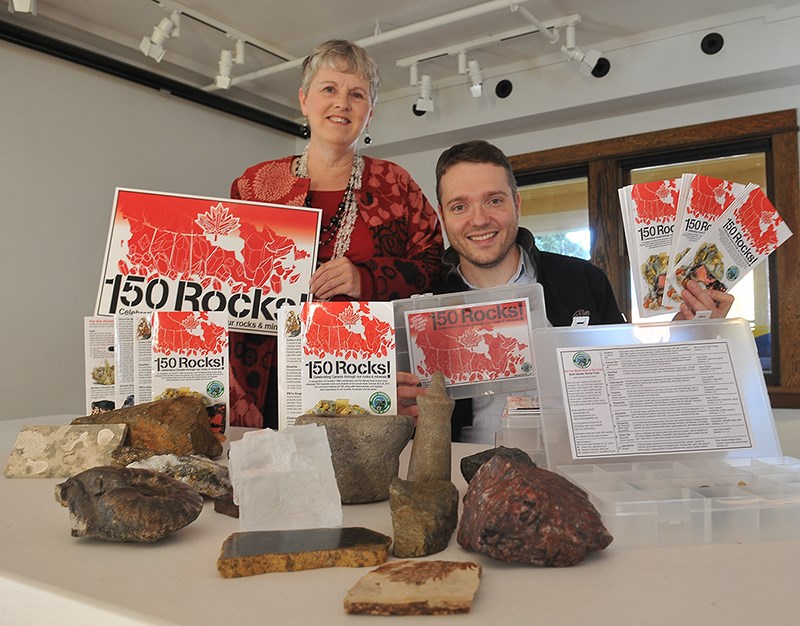Andrew Danneffel is sure it's the same one.
In March, CBC interviewed Johnathan O'Neil, an assistant professor at the University of Ottawa's department of earth and environmental sciences, who showed a sample of a red rock containing traces of life from at least 3.8 billion years ago.
Danneffel had been in contact with the post-secondary institute to obtain specimens for this weekend's annual show hosted by the Port Moody Rock and Gem Club, of which he is president.
And soon after the television story aired, Danneffel had a shipment from the university that contained a similar-looking rock — as the one O'Neil held — with banded iron formations and microfossils.
The hematite that Danneffel obtained will represent Quebec in the club's Canada 150 exhibit, in which minerals, gems and artifacts from the three coasts will be on view at the Kyle Centre on Saturday and Sunday.
Danneffel has been working on gathering the specimens for the past 18 months, contacting mining companies, museums and private collectors with requests to send stones from across the country.
"We wanted to do something special for Canada 150," Danneffel said, noting the club received funding from the Canadian Geological Foundation. "We wanted to tell a story of Canada's history through rocks."
Among the 150 rocks and gemstones he received on loan — which will be displayed under glass in four cases — include a Canadian specimen dug up at the home of Henry VII's Manor House in Dartford, England.
In 1576, privateer Martin Frobisher discovered what he thought was gold ore, on Baffin Island, and shipped 1,550 tones of it back to the U.K. The rock, however, was only fool's gold and Frobisher's find was dumped into construction projects like building the king's home.
Danneffel obtained a piece of the "scandalous" rock from the Darford Museum, in England, as well as kimberlite from the Jericho Diamond Mine in Nunavut; cassiterite from the East Kemptville Tin Mine, in Nova Scotia; halite from the Sifto Salt Mine in Goderich, Ont.; Tyndall Stone from Garson, Man., borrowed from Gillis Quarries Ltd.; "singing sands" from the Basin Head beach in PEI, courtesy of the provincial park; and a "dino-bone" from Dinosaur Provincial Park in Alberta, via the Royal Tyrrell Museum in Drumheller.
Danneffel said he's most excited about the Royal Ontario Museum's loan of burgess shale and Cambrian fossils, discovered in Field and Marble Canyon in B.C. The artifacts are "the real deal," he said.
But there are also finds closer to home that will be on show such as a First Nations bowl and hand grinder, believed to have originated from along the Fraser River hundreds of years ago.
Pacific Coast Terminals, which has its terminal in Port Moody, is also contributing to the exhibit by providing 150 starter kits for kids. The club has included 10 Canadian rock samples like sulphur — which is loaded at PCT — petrified wood and ammonites in the limited-edition kits (the cost is $5 each).
As well, club member and workshop manager Geoff Cameron has cut a 1.47 carat Hessonite garnet and a 1.76 carat smoky quartz that will be auctioned off; proceeds will support the club's operations.
• 150 Rocks – Celebrating Canada Through our Rocks and Minerals is on Saturday and Sunday from 10 a.m. to 5 p.m. at the Kyle Centre (150 Kyle St., Port Moody). Admission is by donation.



